#sweden 1839
Explore tagged Tumblr posts
Text
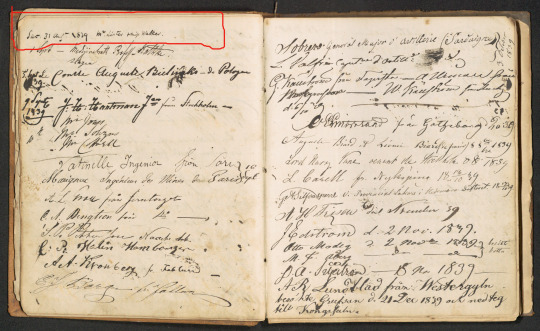
Confirmation of their visit to the copper mine in Falun, Sweden.
Courtesy of Stora Enso ABs arkiv, Arkivcentrum Dalarna, i Falun.
7 notes
·
View notes
Text

world photo day
#© victor s. brigola#brigola#world photo day#1839#square#world photography day#photography#seaview#window#architecture#sweden#fuji x-pro 3
7 notes
·
View notes
Text
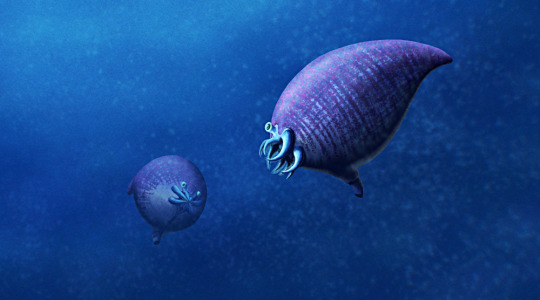
Hexameroceras panderi was a nautiloid cephalopod that lived during the late Silurian, about 425-423 million years ago, in what is now Czechia.
Around 5cm long (2"), it had a downwards-curving egg-shaped shell that preserved the original color pattern on one fossil specimen, showing closely-packed crisscrossing vertical and horizontal bands.
Like several of its close oncocerid and discosorid relatives, its shell also developed a highly constricted opening as it reached maturity. This eventually formed into a narrow visor-like shape with several lobes that probably correlated to the life positions of the eyes and arms, with a "spout" at the bottom for the siphon.
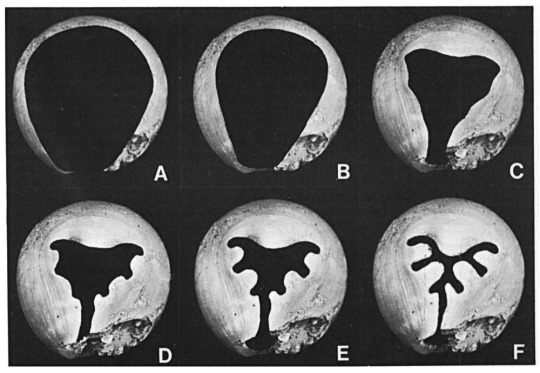
Development of the "visor" in the related Octameroceras sinuosum From fig 6 in Stridsberg (1981)
The function of this structure is still unclear. It may have been a defensive measure against predators – but it would have also severely limited the range of motion of the arms and the size of food that could be eaten through the mouth, suggesting that Hexameroceras may have specialized in very small prey, perhaps even filter-feeding.
Another possibility is that these visored nautiloids might represent brooding females, walling themselves into their shells to protect their eggs and dying after releasing the hatchlings through the tiny remaining gap.
———
NixIllustration.com | Tumblr | Patreon
References:
"Hexameroceras." Paleobiology Database, https://paleobiodb.org/classic/checkTaxonInfo?taxon_no=13035
Mironenko, Aleksandr A. "Early Palaeozoic Discinocarina: a key to the appearance of cephalopod jaws." Lethaia 54.4 (2021): 457-476. https://doi.org/10.1111/let.12414
Mutvei, Harry. "Siphuncular structure in Silurian discosorid and ascocerid nautiloids (Cephalopoda) from Gotland, Sweden: implications for interpretation of mode of life and phylogeny." Gff 134.1 (2012): 27-37. https://doi.org/10.1080/11035897.2012.654507
Stridsberg, Sven. "Apertural constrictions in some oncocerid cephalopods." Lethaia 14.4 (1981): 269-276. https://doi.org/10.1111/j.1502-3931.1981.tb01098.x
Turek, Vojtech, and Š. Manda. "Colour pattern polymorphism in Silurian nautiloid Phragmoceras Broderip, 1839." Bulletin of Geosciences 86.1 (2011): 91-105. http://dx.doi.org/10.3140/bull.geosci.1240
Wikipedia contributors. “Hexameroceras.” Wikipedia, 29 Jun. 2022, https://en.wikipedia.org/wiki/Hexameroceras
#science illustration#paleontology#paleoart#palaeoblr#hexameroceras#hemiphragmoceratidae#oncocerida#nautiloid#cephalopod#mollusc#invertebrate#art
330 notes
·
View notes
Text
My Pioneer Heritage
So, my Biological Family has pioneers in it. Matta Maria Rosenlund (who went by her Middle Name when she got to Utah) & her husband Daniel Dewey Corbett are among them
Daniel Corbett
Daniel was born in Maine on May 16 1807. He and his wife joined the Church in 1839. They moved to Nauvoo in 1844, and only learned about the Martyrdom when he was en route (which means, unfortunately, they never saw the Prophet personally). He was ordained as a Seventy when he arrived in Nauvoo, and used his skill as a Cobbler to help finish the Nauvoo Temple. They received their "partial Endowments" (I am unsure what this means, but if you're familiar with the Endowment, he got at least the Adam part) on January 12, 1846, before they & their family were forced from Nauvoo
They moved Kanesville, Iowa for years. They were able to plant & harvest their own crops, and even had a daughter who would later marry Martin Harris Jr. On July 5, 1849 the family joined the Allen Taylor company, and completed the journey to Salt Lake
When they arrived, they were allotted land between 4-5 East & 6-7 South. In the early years, he was extremely charitable (given the hardship of all the Saints during this era). He would make & mend shoes for little to no charge, collected firewood for widows, and gave what flour they could spare to those in need (they would take a brass kettle of flour to them as their Fast Offerings)
They wore homespun clothes, dying & spinning the yarn, then sending it to the mill to be made into cloth. They ate Pork, Cornbread, Jonnie Cakes, and Sugar Cane Molasses. They fasted on Thursday Morning (Fast Day was Thursday in the Early Church)
He lived close to the school, and was one of the few Saints who had a clock, so students were often sent to his home to determine the time. Daniel's family was unable to afford the 25¢ a week cost, so like many students, they paid it with vegetables
Daniel loved his wife, Elmira (born 1811). They were Sealed by Brigham Young on June 30, 1853. Unfortunately, she passed in February the next year. This lead Daniel to have to care for 6 children (ages 5-24, with the oldest being married the year before). He remarried Ann Jones, an English Convert, on November 8, 1861. Ann was married before she immigrated in 1849, but it is unknown if she was widowed or divorced. Ann had poor health, and was infertile. As her health became worse, she told Daniel to find a Second Wife, to help care for her & the 2 children left at home. This wife was Matta Rosenlund. Ann died in December 1888, and always held love for her sister-wife (although we know more about Elmira & Matta, Ann is relatively unknown, possibly because she had no children to tell her story. I hope, when the Resurrection occurs, I will be able to learn at the feet of the woman who brought my 3rd Great-grandmother into her family)
He lived many years, supporting his family, and living the Gospel until his passing on June 26, 1892. He was buried next to Ann
Matta Maria Rosenlund
Matta was born November 1, 1826 in Malmöhus, Sweden. She was the first born of Wilhelm Jonas Rosenlund & Boel Jonsson. She had 2 sisters & a brother: Anna (March 20, 1829-? She survived to Adulthood), Hannah (May 25, 1831- May 25, 1832), and Johan Wilhelm (April 10, 1834-October 2, 1836)
Both of her parents died of Cholera in Stockholm when she was 13, leading her & 10 year old Anna being placed in an Orphanage. Despite this, Matta (and presumably Anna) were educated at the King's School, given her father's illustrious military career (being the equivalent of a 4-Star General by age 30). After her education, she got a job in a bakery before marrying Ockar Victor Leonard Svansberg on May 29, 1849
Oscar was a French Sculptor & a Mason "of high degree." She was seen as more Spiritually inclined, while her husband was more Worldly. However, they were often seen together at high society events, such as Masonic Balls ("where Mr. Svansberg was usually the leader because of his pleasing appearance and personality")
Together, they had 4 Children in Stockholm: Victor Mauritz (June 25, 1850-), Maria Lovisa (July 4, 185è-), Oscar A. (1853-? Died in Infancy), and Hilma Ida Constance (May 4, 1863-)
Maria was a faithful Lutheran, but joined the Church in 1859. She spent the next 5 years trying to bring her husband to the Church. When he wouldn't join, she left him, and brought their daughters (Lovisa age 11, Ida under 1) to England with her. They sailed on the Monarch of the Sea under the direction of John Smith (Church Patriarch)
The journey was treacherous. They sailed from April 28, 1864 to June 3, 1864. There were 973 immigrants, and they were provided with little water and whatever provisions the Church could gather (Hardtack, Pork, Peas, and a little White Flour, Sugar, Coffee, and a few other things). The next day, they saw the logistical errors of feeding nearly 1,000 people when it took them 8 hours to get everyone Rice. It was also on this day the first baby died on Measles. Ida was the only baby to survive the voyage, with the other 20 either dying from the disease, or being thrown to sea. The Capitan was determined to throw Ida to sea as well, but Matta hid Ida in her Shawl. In addition to sickness, the sea was so violent that the sickbay was often full of people injured by being thrown around, and there were days when the cook was unable to safely cook (meaning there was no food those days)
After arriving in New York, she took a number of trains until she arrived in Nebraska. On July 4, 1864, Matta & her Daughters joined with the William B Preston Company, arriving in Salt Lake on September 15th, 1864. Her grandson reported that "although Zion did not appear to her as she had anticipated, she many times made the remark that when she set her feet on Utah soil it was the happiest moment of her life. The struggle to exist was a very difficult one, but she seemed obsessed with the desire to make good, and through toil, struggle, and undying faith she succeeded." Soon after her arrival, she heard from friends back in Sweden of the death of her husband
Her son, Victor wanted to join his mother & sisters on their journey, but was unable to due to his service in the Swedish Military. He arrived on July 14, 1877 (after a mere 3-weeks journey). He lived with his mother for 2 years, before disappearing without a trace
When in Utah, she became a Nurse, and helped Ann Jones. Ann & Matta (platonically) loved each other, and Ann asked Daniel to take Matta as a Plural Wife. This marriage resulted in 2 Children: George Q (November 28, 1866-September 20, 1867) & Otis (December 21, 1868-Febuary 4, 1940). Ann helped watch the Children when she was away from home, and adored all of Daniel's Children (as well as Matta's Children from her first marriage) like they were her own
Matta continued her career for over 20 years, sometimes accompanying Ella Shipp (honestly, I can write a whole essay about this badass female doctor, but you'll have to Google her for now). She was eternally optimistic, and was known for helping her patients recover rapidly. She delivered hundreds of children
I love learning about family history because of the lessons we can learn from those who came before
Daniel was a loving man. He never had much, but he was generous with what he did have. Maybe he only had a kettle of flour, but he gave that flour to those who needed it more. Although Matta's Children weren't his own, he loved them unconditionally, and gave whatever he could
Ann may have been infertile, and invalid, but she didn't let either stop her. She rejoiced in all the children of her husband's wives. She cared for them when she could muster up the strength
And Matta went through a lot. Orphaned at 13 & having to care for a sister, fearing having your daughter thrown overboard, having a son go missing without a trace, and being constantly surrounded by sickness. But she never lost hope. She was born in high society, and married into it. But her happiest moment was after she gave it up. She fought for everything she had, and that brought her joy, because she knew she had earned every blessing
I want these stories to be known. Every story deserves to be told, to live through the Ages, to inspire the Children of Men to do better
I want to hear your stories. I chose my Pioneer Ancestors because they speak to me the most. But I want to hear about the people who's stories you most value, whether your parents' story, or some obscure knight in the 12th century.
𐐔𐐰𐑌𐐷𐐲𐑊 𐐔𐐭𐐨 𐐗𐐫𐑉𐐺𐐮𐐻- 𐐕𐐰𐑉𐐮𐐻𐐨 𐐮𐑆 𐑄 𐐑𐐷𐐳𐑉 𐐢𐐲�� 𐐲𐑂 𐐗𐑉𐐴𐑅𐐻
𐐣𐐰𐐻𐐲 𐐣𐐲𐑉𐐨𐐲 Rosenlund (unsure how to pronounce her last name...)- 𐐆𐑁 𐐷𐐨 𐐸𐐰𐑂 𐑁𐐩𐑃 𐐰𐑆 𐐩 𐑀𐑉𐐩𐑌 𐐲𐑂 𐑋𐐲𐑅𐐻𐐲𐑉𐐼 𐑅𐐨𐐼, 𐑌𐐲𐑃𐐮𐑍 𐑇𐐰𐑊 𐐺𐐨 𐐮𐑋𐐹𐐪𐑅𐐲𐐺𐐲𐑊 𐐲𐑌𐐻𐐭 𐐷𐐭
7 notes
·
View notes
Note
Hi, im new to royalty so forgive me if its a stupid question thats been answered a million times. If i understand it correctly there is a naming tradition in Denmark with the regnal names of kings alternating between ‘Christian’ and ‘Frederik’, QMII took the place of a Christian, named her son Frederik etc. What if prince Christians first child is a girl? Its relatively new that women can inherit the throne over their younger brother so I understand theres no precedence for it. What do you think? What would happen if you get a Dutch lineage with like a million (4) queen regnants in a row, would they all be called Margrethe?
Hello :) I've had some stupid questions in my time and it's certainly not stupid haha. If people aren't aware, from 1513 until Queen Margrethe came to the throne Denmark had an unbroken pattern of alternating names: King Christian, then King Frederik, then King Christian, then King Frederik and so on. Margrethe is treated as an Honorary Christian for the sake of the pattern. There are a few things:
It wouldn't actually be uncommon to have multiple royals or multiple monarchs in a row with the same name. They find ways to differentiate. They have numerals - Queen Margrethe II, King Harald V etc. They can use nicknames or middle names - Harry's birth name was Henry, Catharina-Amalia is referred to as Amalia. They'd find a way if they wanted to.
The Christian and Frederik tradition going on so long without interruption is not that straight forward. Margrethe's father was a King Frederik but his birth name was Christian. Frederik VIII was also born Christian. So they could call a princess anything but she could still use Margrethe as Queen. Secondly, Christian IX was born Christian but was never expected to be King of Denmark, he was chosen when the previous line died out, so if he'd had a different name or they'd chosen someone else the tradition could have died in 1863. Christian VIII was also born Christian but he inherited the throne from his cousin who had no kids so if he'd had a different name it could have died in 1839. And Christian IV's original heir was also called Christian but he died childless at age 44, without taking the throne, which meant his brother Frederik became King and was able to continue the pattern. So, again, it's actually very possible the tradition was going to end as early as 1648. The pattern is old but it's not guaranteed, it never has been. It only continued this long through monarchs actively choosing that regnal name and a healthy dose of luck!
And lastly, and perhaps most importantly, calling female heirs Margrethe isn't really a tradition anyway. Denmark's only had two Queens and they were both called Margrethe. But our Margrethe was named after her British grandmother Margaret of Connaught who was Crown Princess of Sweden, not Margrethe I. And when she was born she had no rights to the throne and her parents had every reason to believe a son would follow. She was 7 when they accepted a son wasn't likely. So it really is a coincidence that the second woman to reign as monarch had the same name as the first, it couldn't have been an attempt to start a tradition as they had no reason to think she would be Queen. Continuing tradition is always voluntary but I can see why they would stick to something that's been ongoing for 500 years. But if Christian had a daughter first, there's no automatic expectation he'd call her Margrethe.
17 notes
·
View notes
Text
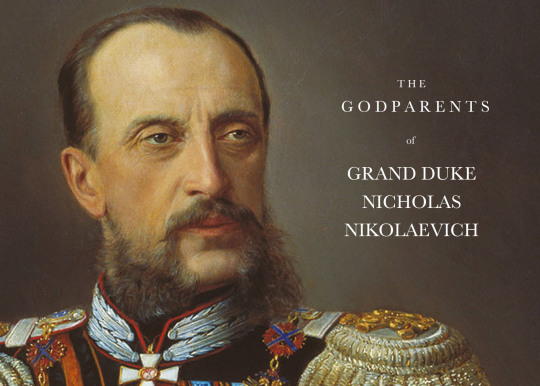
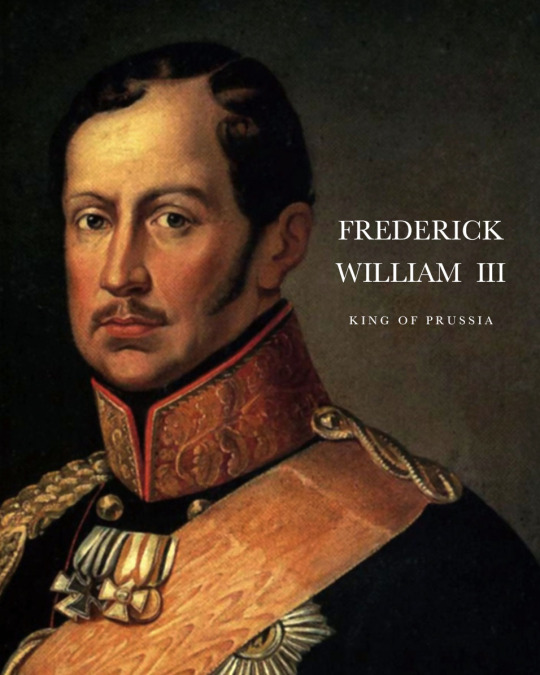
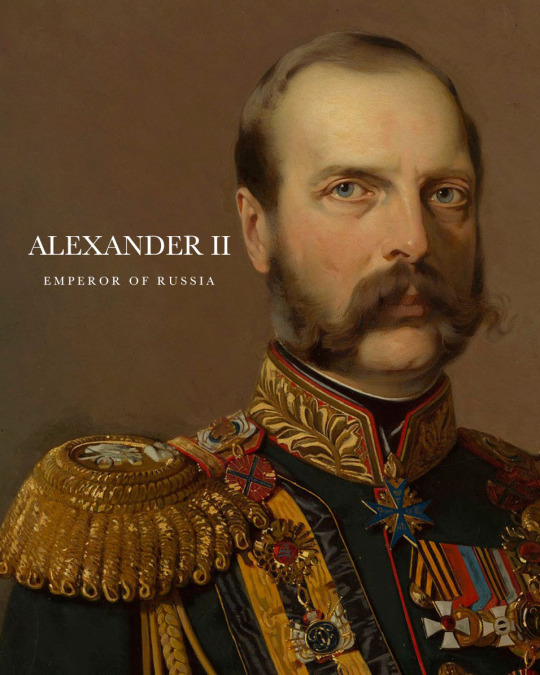
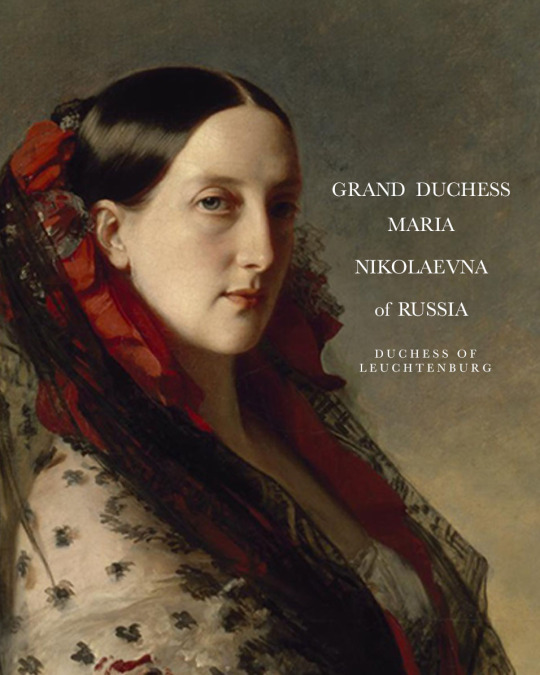

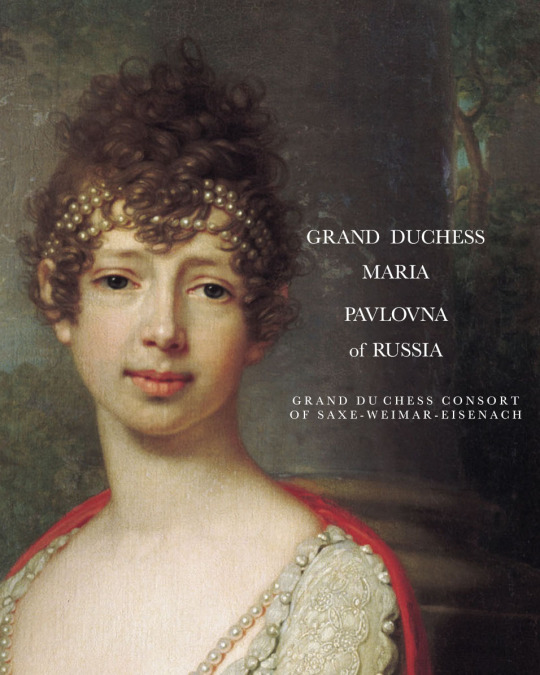
GODPARENTS OF GRAND DUKE NICHOLAS NIKOLAEVICH
Grand Duke Nicholas Nikolaevich was the third son of Emperor Nicholas I of Russia, born on 8 August 1831 at Tsarskoe Selo, Saint Petersburg. He was christened four weeks later on 1 September, in The Old Palace Church, Tsarskoe Selo, by the Confessor of His Imperial Majesty Father Muzovsky. He had five listed godparents:
FRIEDRICH WILHELM III, KING OF PRUSSIA - his maternal grandfather was amongst his godparents. He ruled Prussia during the trying times of the Napoleonic Wars. Following Napoleon's defeat, he took part in the Congress of Vienna, which assembled to settle the political questions arising from the new, post-Napoleonic order in Europe.
ALEXANDER II, EMPEROR OF RUSSIA - the then 13 years-old Tsarevich stood as one of the godparents of his younger brother. He became the Emperor of All Russia upon the death of their father in 1855. Alexander's most significant reform as emperor was the emancipation of Russia's serfs in 1861, for which he is known as Alexander the Liberator.
GRAND DUCHESS MARIA NIKOLAEVNA OF RUSSIA, DUCHESS OF LEUCHTENBERG - then 12 years of age, the young grand duchess was among the godparents of her younger brother. The second child and eldest daughter, Maria was noted for her formidable personality, her wit and her strong character. In 1839, she married Maximilian de Beauharnais, 3rd Duke of Leuchtenberg (grandson of Joséphine de Beauharnais). She was an avid art collector, and was the President of the Imperial Academy of Arts in Saint Petersburg.
GRAND DUKE MICHAEL PAVLOVICH OF RUSSIA - his uncle another of his listed godparents. The grand duke, trained for the military, became the Commander of the Guards Corps during the Russo-Turkish War (1828-29).
GRAND DUCHESS MARIA PAVLOVNA OF RUSSIA, GRAND DUCHESS CONSORT OF SAXE-WEIMAR-EISENACH - her aunt was another of his godparents. One of the daughters of Emperor Paul I, the grand duchess married a German prince Karl Friedrich, Grand Duke of Saxe-Weimar-Eisenach in 1804. She was an intellect, interested in both arts and sciences. German poet and novelist Johann Wolfgang von Goethe hailed her as one of the worthiest women of his time. She was the great-grandmother of Wilhelm II, German Emperor and Queen Victoria of Sweden.
Source
10 notes
·
View notes
Text
Events 8.19 (before 1930)
295 BC – The first temple to Venus, the Roman goddess of love, beauty and fertility, is dedicated by Quintus Fabius Maximus Gurges during the Third Samnite War. 43 BC – Gaius Julius Caesar Octavianus, later known as Augustus, compels the Roman Senate to elect him Consul. 947 – Abu Yazid, a Kharijite rebel leader, is defeated and killed in the Hodna Mountains in modern-day Algeria by Fatimid forces. 1153 – Baldwin III of Jerusalem takes control of the Kingdom of Jerusalem from his mother Melisende, and also captures Ascalon. 1458 – Pope Pius II is elected the 211th Pope. 1504 – In Ireland, the Hiberno-Norman de Burghs (Burkes) and Cambro-Norman Fitzgeralds fight in the Battle of Knockdoe. 1561 – Mary, Queen of Scots, aged 18, returns to Scotland after spending 13 years in France. 1604 – Eighty Years War: a besieging Dutch and English army led by Maurice of Orange forces the Spanish garrison of Sluis to capitulate. 1612 – The "Samlesbury witches", three women from the Lancashire village of Samlesbury, England, are put on trial, accused of practicing witchcraft, one of the most famous witch trials in British history. 1666 – Second Anglo-Dutch War: Rear Admiral Robert Holmes leads a raid on the Dutch island of Terschelling, destroying 150 merchant ships, an act later known as "Holmes's Bonfire". 1692 – Salem witch trials: In Salem, Province of Massachusetts Bay, five people, one woman and four men, including a clergyman, are executed after being convicted of witchcraft. 1745 – Prince Charles Edward Stuart raises his standard in Glenfinnan: The start of the Second Jacobite Rebellion, known as "the 45". 1745 – Ottoman–Persian War: In the Battle of Kars, the Ottoman army is routed by Persian forces led by Nader Shah. 1759 – Battle of Lagos: Naval battle during the Seven Years' War between Great Britain and France. 1772 – Gustav III of Sweden stages a coup d'état, in which he assumes power and enacts a new constitution that divides power between the Riksdag and the King. 1782 – American Revolutionary War: Battle of Blue Licks: The last major engagement of the war, almost ten months after the surrender of the British commander Charles Cornwallis following the Siege of Yorktown. 1812 – War of 1812: American frigate USS Constitution defeats the British frigate HMS Guerriere off the coast of Nova Scotia, Canada earning the nickname "Old Ironsides". 1813 – Gervasio Antonio de Posadas joins Argentina's Second Triumvirate. 1839 – The French government announces that Louis Daguerre's photographic process is a gift "free to the world". 1848 – California Gold Rush: The New York Herald breaks the news to the East Coast of the United States of the gold rush in California (although the rush started in January). 1854 – The First Sioux War begins when United States Army soldiers kill Lakota chief Conquering Bear and in return are massacred. 1861 – First ascent of Weisshorn, fifth highest summit in the Alps. 1862 – Dakota War: During an uprising in Minnesota, Lakota warriors decide not to attack heavily defended Fort Ridgely and instead turn to the settlement of New Ulm, killing white settlers along the way. 1903 – The Transfiguration Uprising breaks out in East Thrace, resulting in the establishment of the Strandzha Commune. 1909 – The Indianapolis Motor Speedway opens for automobile racing. William Bourque and his mechanic are killed during the first day's events. 1920 – The Tambov Rebellion breaks out, in response to the Bolshevik policy of Prodrazvyorstka. 1927 – Patriarch Sergius of Moscow proclaims the declaration of loyalty of the Russian Orthodox Church to the Soviet Union.
1 note
·
View note
Text
flower symbolism makes me very very happy. i have no idea why but it makes something in my brain work.
Started in Europe
Conflicting accounts for who was first to write
1. Catherine H. in 1839 “The Language of Flowers” found in her book on the language of flowers, Flora’s Lexicon
Based on the LOF in Victorian England, France, and America
2. Mme. Louise Cortambert (pseudonym “Charlotte de Latour”) in her book “Le 8Langage des fleurs” which translates to The Language of flowers.
LOF is based on folklore, literature, mythology, religion, and the plant's physical characteristics.
Symbolic association from Chinese, Japanese, Middle Eastern, Greek, and Roman cultures/mythology/religion
Literature from Shakespear
Turkish language of flowers and objects (Selam)
Taking Turkish words for different flowers and finding which other words they can rhyme with and making a sentence out of it. (Armonde (Pear) rhymes with omonde (hope) so a rhyme for these two words can be Armonde - Wer banna bir omonde (Pear - Let me not despair)
The Turkish language came to Europe through two people, Seigneur Aubry de la Mattraye and Lady Mary Wortley Montagu. Husband and wife. They were Turkish embassies that went before the court of Charles XII of Sweden and shared the language of objects and in this case flowers.
Physical characteristics (root, stem, leaf, bloom?, and seed
Chrysanthemum/mums: A symbol of death and mourning, but also support and encouragement
Found in east Asia in grasslands, mountain slopes, riversides, fields, and seashores
In Europe, it means death because it was a commonly used flower to decorate graves in the 1700s. Asian Countries have a more positive meaning, used for family seals and pottery. (represents the turning of the seasons) November birth flower
Forget-me-nots: It can be used to symbolize remembrance – both during a parting or after death (bright blue flowers)
Europe, Asia, and Australia in wood/boggy areas
German folktale, where a dying knight threw flowers at his lady and said forget-me-not, the lady wore the flowers forever.
Hyacinth: Sorrow, I am sorry. Please forgive me.
The Mediterranean and tropical Africa and woodlands
From greek mythology, where apollo and zephyrs killed Hyacinth and his remains were turned into purple hyacinth in the sorrow of his death. (slightly toxic)
Yellow Roses: Said to symbolize friendship
Mostly in Asia but in other places to
Yellow is a very positive and happy color, In Korean and Japanese culture, it was used as a symbol of jealousy.
Daffodils: Symbols of rebirth and hope
Europe, Asia, Mediterranean meadows/woodland edges
The first flowers bloom in the spring, so it represents the new life after the winter months. March birth flower cause it usually blooms in march
Foxglove: Symbols of insecurity + many other things
Europe, the Mediterranean, and in woodlands
From Folk’s gloves (the fae folk), cautious tale to scare children from picking them. (Poisonous) also grown for the Virgin Mary (our lady’s gloves/gloves of the virgin)
Lily of the valley: Means the return of happiness
Eurasia, eastern North America, and in mountain forests
Used in religious ceremonies, it Represents Eve’s tears after she left the garden, the national flower of Finland, the May birth flower, is associated with Ostara, known for her humility (germanic mythology)
Baptisia (False/Wild Indigo): Symbolizes protection
Central and eastern north America near wood, meadows, stream
Associated with Venus (the Roman version of Aphrodite), (toxic but can be used as a noninflammatory, indigenous people use it for blue dye)
White orchids: symbolizes apology
Asia and in tropical forests
over 35,000 different varieties, based on the word orchis (which means testicles in greek because a writer said orchids looked like them) sign of wealth in the victorian era and in japan
Yarrow: symbolizes a wish for better health
Grasslands and forests, Eurasia
comes from the greek word here which means holy herb, neanderthals though they were a holy flower, druids used them in ceremonies, medieval Europe used them to exercise ghosts, dreaming means you'll receive good news, good for clotting blood
iris, arborvitae, and bluebell- are supposed to convey trust, friendship, and gratitude.
Carnations- innocence, remembrance
Hyacinths- deep sorrow, forgiveness, regret
White lilac- youthful innocence, new beginnings
Peonies- Family
Red roses- love, respect
Yellow rose- friendship
Blue tulip- peace and tranquility
Blue gladiolus- loyalty
Iris- hope
White tulip- I’m sorry
Lily- sympathy, innocence
Purple hyacinth- deep sorrow
6 notes
·
View notes
Text
Baseball's Long Road at the Olympics
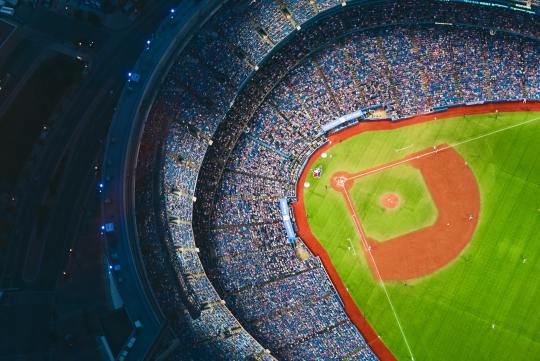
The invention of the American sport of baseball is often credited to Abner Doubleday in 1839, though the game can be traced back as far as the 18th century. By the 1860s, baseball had taken on the title of the “nation’s pastime.” Major League Baseball formed in 1876 and the sport has spread throughout the country, and the world, ever since. While the sport has a long, rich history in the United States, baseball’s inclusion at the Olympics has been sporadic.
Baseball was first featured on the Olympic stage during the 1904 Summer Olympics in Saint Louis, Missouri, the first modern Olympics held on American soil. However, the sport’s inclusion was unofficial, not even constituting a demonstration sport, and there is little recorded information about what games were played.
Baseball was not included during the 1908 games in London, but was featured as an official demonstration sport in Stockholm at the following summer games. The program consisted of a single game played between the US and Sweden at Stockholm’s Ostermalm Athletic Grounds. America raced out to a 5-0 lead after two innings and sealed the game, which lasted six innings, with 8 runs in the fifth inning for a 13-3 victory.
Baseball did not feature at the Olympics again until 1936, again appearing as a demonstration event. This time the US Olympic team faced the “World Champions,” who were in fact a second team of American players. The World Champions broke a tie in the bottom of the seventh inning, winning 6-5 in front of 90,000 spectators at Olympic Stadium in Berlin.
Once again, Olympic officials and host nations elected not to continue or expand the baseball program. Pesäpallo, a Finnish variant of baseball, was featured as a demonstration sport at the 1952 games in Helsinki, and host nation Australia chose baseball as a demonstration event in 1956. The game between the US and Australia, an 11-5 win for the Americans, was the first baseball game between international teams in 44 years. The 1964 Olympics in Tokyo represented the fifth and final time the Olympic baseball program would consist of a single demonstration game.
Two decades later, the 1984 Olympics in Los Angeles brought baseball back as a demonstration sport, but this time with a full program. Baseball was a full demonstration sport again in 1988 before joining the Olympic program as an official sport in 1992.
The Barcelona Olympics saw Cuba become the first ever gold medalists in baseball, defeating Chinese Taipei 11-1 in the final game. Japan defeated the US 8-3 to win bronze. Cuba defended its gold medal at the Atlanta games in 1996 and placed first for a third time in 2004. Gold medals went to the US and South Korea in 2000 and 2008, respectively.
Baseball was not featured at the 2012 London or 2016 Rio de Janeiro Olympics, but returned in 2020. Host nation Japan defeated America 2-0 to win gold, while the Dominican Republic secured bronze.
There is no women’s baseball program at the Olympics. However, softball joined baseball as an Olympic event during the 1996 Olympics in Atlanta. The US women’s team won three consecutive gold medals before losing 3-1 to Japan during the 2008 gold medal game in China. Japan again defeated the US, by a score of 2-0, to win gold in 2020.
The International Olympic Committee has announced that neither baseball nor softball will feature at the 2024 games in Paris. The 2028 games have been scheduled for Los Angeles.
3 notes
·
View notes
Photo

"19th of August, 1839 I wish I could ask you how much you remember. I don't know if there will be anything left after I consume this drink. Don't be afraid Daniel. I can't tell you why, but know this. I choose to forget. Try to find comfort and strength in that fact. There is a purpose. You are my final effort to put things right. God willing, the name Alexander of Brennenburg still invokes bitter anger in you. If not, this will sound horrible. Go to the Inner Sanctum, find Alexander and kill him. His body is old and weak, and yours, young and strong. He will be no match for you. One last thing, a shadow is following you. It's a living nightmare, breaking down reality. I have tried everything and there is no way to fight back. You need to escape it as long as you can. Redeem us both Daniel. Descend into the darkness where Alexander waits and murder him. Your former self, Daniel"
#amnesia#amnesia: the dark descent#amnesia the dark descent#daniel of mayfair#i wish it was 1839#(joke)#it's 10 am in my country#9 am in sweden#8 am in uk and 3 am in usa#i think it's time#i'm gonna eat a cake today#artists on tumblr
19 notes
·
View notes
Text
This Friday, the 30th of May, is Walpurgis Night! (Valborgsmässoafton, or simply Valborg, in Swedish). Walpurgis Night is celebrated in several European countries. It is a celebration of Saint Walpurga, but in Sweden it is, before anything else, a celebration of the arrival of spring. It is traditionally celebrated by gathering around huge bonfires. At the oldest universities in Sweden, a lot of more or less local Valborg traditions take place.
One tradition is that the student choirs gather before the bonfire is lit to sing songs celebrating spring. Längtan till landet, (longing for the countryside), is perhaps the most iconic one. It was written as a poem in 1838 by Herman Sätherberg, and arranged for a male choir in 1839 by Otto Lindblad. The song is often referred to by it's initial lyrics, "Vintern rasat" (Winter has been raging). The lyrics describe the snow melting away, to give way to spring and summer.
Although the song is traditionally sung by a male choir, here is an example of a version with a female student choir from the university of Lund, one of the oldest in Europe. The singers are, as is customary, wearing their student caps from their graduation from gymnasiet.
youtube
#valborg#valborgsmässoafton#walpurgis night#vintern rasat#längtan till landet#swedish music#music#swedish#sweden#langblr#svenska#1830's#choir#lund#bella voce#student culture#Spotify#Youtube
16 notes
·
View notes
Text
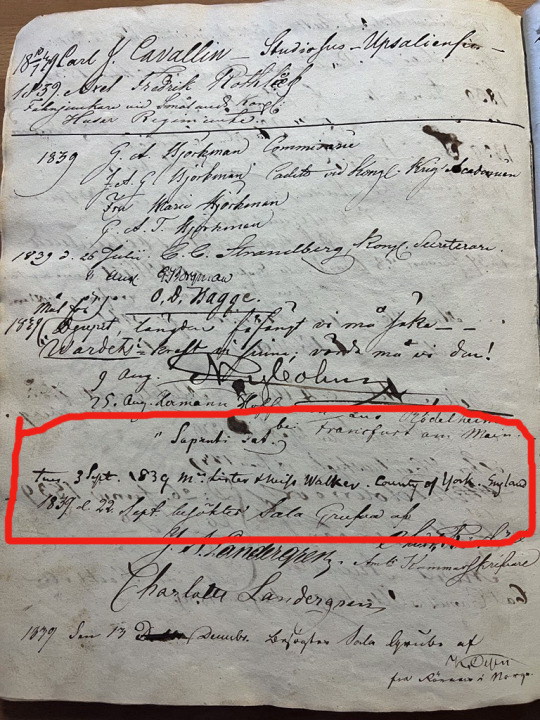
Tues[day] 3 Sept[ember] 1839 Mrs Lister and Miss Walker. County of York. England.
Visitor book for the silvermine at Sala, Sweden. Newly discovered entry by Anne Lister. Courtesy of Niklas Ulfvebrand, Sala Silvergruva AB
5 notes
·
View notes
Photo

Gustava Charlotta Jacquette Aurora Gyldenstolpe (4 July 1797 – 7 January 1839, Constantinople) was a Swedish noble and lady-in-waiting. She is known as the mistress of Oscar I of Sweden in circa 1819-1827.
8 notes
·
View notes
Photo

Happy birthday, Maréchal Brune!
And again a marshal about whom I knew nothing before, except for his name and his sad ending. Born in 1763, he was a couple of years older than Napoleon and most other active marshals, and he seems to have kept most of his republican ideals even under the empire, which of course made him look suspicious in Napoleon’s eyes.
Some informations about his early years I found in yet another book on Google, volume 4 of »Histoire de la vendée militaire« by Jacques Crétineau-Joly, Paris 1850.
Guillaume Brune, born in Brives-la-Gaillarde on 13 March 1763, had been destined for the bar by his father, a lawyer himself; but, giving in to his taste for poetry, he neglected the study of jurisprudence. The Revolution arrived: Brune threw himself into it with enthusiasm. In 1790, as a printer, he suffered unforeseen losses which forced him to abandon his business. War was imminent. Brune enlisted in the 2nd battalion of the Seine-et-Oise volunteers. On October 18, 1791, he was elected adjutant-major; and he began his military career under adverse auspices, but fortunate then. He was accused, we should say praised, of having dipped his hands in the blood of the Princess of Lamballe. It was a crime of which Brune was innocent, and he had only the republican weakness to permit this to be attributed to him; and this man, robust and a fine soldier, led the armies to victory.
His description in a military history of the Vendée is due to the fact that Napoleon in 1800/01 sent him there to finally pacify the royalist uprisings. If the rumours the author refers to here, namely that it had been Brune who had carried the Princesse de Lamballe’s head on a pike under Marie-Antoinette’s prison window, really already were attached to his name at this time, they would come back to haunt Brune in the worst possible way: During the »White Terror« under the Second Restauration, when Brune stopped in Avignon on his way to Paris, a royalist mob recognized and brutally killed the alleged murder of the Princesse de Lamballe.
But that’s actually not the story that I wanted to tell. Because at the moment I’m in desperate need of anything even remotely nice or funny. So here’s Brune in 1807, as commander-in-chief during the siege of Stralsund in Sweden, at a meeting with probably the wackiest monarch of the era, who went officially insane a few years later, Sweden's King Gustav IV. (Taken from von der Lühe, »Militair Conversations-Lexikon«, Vol. 7, Adorf 1839)
Since the Swedish warships off Colberg treated the French troops in a hostile manner, contrary to the terms of the armistice, and Stralsund became the rallying point for ranched and newly recruited Prussians, Marshal Brune asked for an explanation of this violation of the treaty, whereupon the King proposed to him a personal meeting at Schlatkow, which took place on June 4. In this meeting he made the strange offer to the French Marshal to unite with him against Napoleon and to recognise the Bourbons.
Brune: So, about those ships and your support for the Prussians, I cannot let that pass.
Gustav: Oh, yes, yes, sorry about that. Listen, how about we become allies and bring the Bourbons back on the French throne?
Brune: … N-no? … Is this a trick question?
And of course, because I do that for all the marshals, a look at the »presents« Brune received while he was in Stralsund, taken once more from Francke »Aus Stralsunds Franzosenzeit«:
Brune himself started on a small scale: for the time being, he was content to seize a silver chess set from the city's art collection. Of course he only borrowed it for the duration of his stay here, but just as naturally he took it with him when he left.
O, come on. Who knows if it was even intentional. These guys were awfully busy! Mistakes happen.
Well, that was for the time being, the rest followed: on September 15, the Marshal's secretary, Berne, informed the Council that His Excellency expected a considerable gift, i.e. at least 100,000 francs, as a proof of gratitude for the care with which he had treated the city. This sum was therefore necessarily raised and sent to the Marshal with an obligatory letter, in which, at the express request of the latter, the 100,000 francs had to be described as a small compensation for the costs of the journeys which he had made in the interest of the city of Stralsund and the province. For Monsieur Berne, who was held in high esteem by the marshal and even called him »tu«, the small sum of 500 louis d'or, which the city honoured him with, also coincided with this occasion.
Incidentally, shortly after Rügen had been completely evacuated by the Swedes, Brune was recalled from here in disgrace. The reason for this, it is said, was that he had allowed General Toll to transfer his army to Skåne, while he could force it to surrender by carrying out the already prepared landing on Rügen.
In a footnote the author adds:
He never received another position until Napoleon's first fall; only in the 100 days when he rejoined the Emperor was he given command of a detachment in southern France, which was disbanded after Napoleon's second abdication. When the Marshal then travelled to Paris, he was attacked and murdered in Avignon by the mob of that city, which had been incited against the Bonapartists, or, as others say, when he realised the impossibility of escaping the angry crowd, he killed himself with a pistol shot.
It seems there’s no escaping Brune’s tragic death. As to the reasons for Brune’s disgrace, I have found several other explanations, the easiest probably being that Napoleon was ridding himself of people he feared might oppose his more and more authoritarian policies. An interesting variant has Napoleon using as a pretext the fact that Brune, during the negotiations in Stralsund, spoke only of the »French army« and not of the »army of the Emperor and King«. A capital crime, of course.
23 notes
·
View notes
Text

Gentleman Jack Inktober 2021 Day 11 - sour
Thanks to dear ❤🙏 We have this interesting Anne Lister's diary entry:
19 July 1839 (Sweden, traveling by carriage, so they stopped for a while to pick some cranberries): at 10 to 7 10 1/4 Ann and I walked up the hill in the forest – the cranberries taste tartish rather sour – at 10 1/2 put drag on for a few minutes – hard to get it off – I got on to the box with William and helped him to pull back the horses – no mouths – difficult to make them back to do any good – very fine and sunny more clear blue sky today than we have ever seen since we 1st landed
33 notes
·
View notes
Photo










Ytterhogdal, Sweden (No. 1)
Ytterhogdal is a locality situated in Härjedalen Municipality, Jämtland County, Sweden with 534 inhabitants in 2010. European route E45 passes the village
Ytterhogdal Church (Ytterhogdals kyrka) is in the Diocese of Härnösand. The church building was built in the years 1799-1809 by the builder Johan Christian Loëll from Gävle. It was built in stone with a tower to the east. The sculptures in the church were made between 1839-48 by Göran Sundin (1795-1857).
Source: Wikipedia
#Kläppsjön#Ytterhogdal#Hälsingland#Jämtland County#summer 2020#lake#Härjedalen Municipality#original photography#reflection#lawn#meadow#tree#nature#cityscape#landscape#woods#Forest#lake shore#architecture#stuga#clouds#wildflower#tourist attraction#landmark#hills#countryside#Scandinavia#Northern Europe#Sweden#Sverige
10 notes
·
View notes